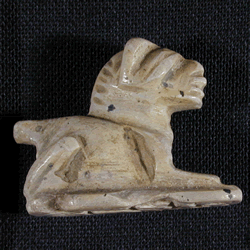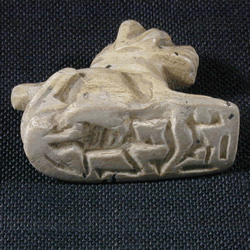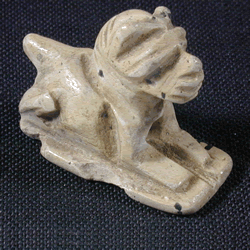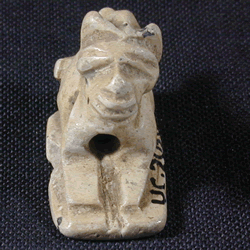| Homepage | Timeline | Maps | A-Z index | Learning |
 |
 |
 |
 |
UC 20582 button seal, First Intermediate Period (about 2100 BC)
Sealing is an easy way for announce ownership on sealed objects. An object with a sealing could still very easy be opened, but an unbroken seal proofs that the object is untouched. At about 3500, in the so-called Naqada Period, the first seals appear in Egypt. The first seals seems to be imported from the Near East, but very early Egyptians made their own seals. The first seal type in Egypt is the cylinder seal. This type is used throughout the Naqada period and the whole Old Kingdom (about 2686-2181 BC). They bear already very early inscriptions; very common are the titles and name of king in combination with name and titles of an official. In the Old Kingdom the names of officials very rarely appear on seals. At this timen the production of seals seems to be restricted to the king. At the end of the Old Kingdom the so-called button seals came into use. These are small round objects made of faience, bone, steatite or other materials. The buttons seals are never inscribed but show instead abstract figures, gods and often geometrical designs. They might have been used preliminary in the administration by non-literate people. Most buttons seals found in tombs seems to be used a part of woman's jewlery. The back sides are often shaped - like UC 20592 - as animals, or they show simply a geometrical form. At the end of the First Intermediate Period the back side in the shape of a scarab became very popular. This design replaced in the Middle Kingdom (about 2025-1700 BC) most of the other figures.
UC 20582 is an unique button seal, showing a dog on the back side. The seal was found in tomb 3301 in Badari. Badari is a modern village. Next to it a series of cemeteries have been excavated. These cemeteries might mainly belong to small rural settlement along the Nile in Middle Egypt. Many of the tombs found belong to the First Intermediate Period and show the wealth in the provinces in that time in Egypt.